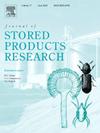Development of Bruchus rufimanus Boheman 1833 (Coleoptera: Chrysomelidae) at different temperatures with special emphasis on rearing and modelling approach
Abstract
Modelling the thermal response of insect pests is a valuable tool for predicting the stage development of the population, supporting the formulation of more sustainable and effective control strategies. This study focuses on Bruchus rufimanus, a specific pest of Vicia faba L. responsible for damages caused by larvae that develop inside the seeds. In particular, it tackled the thermal development modelling of this pest in a two-fold approach, given the current lack of information on the cryptic post embryonic development in terms of degree-days. Baseline data were collected by laboratory rearing that considered the insect reproductive diapause and proposed first insights for developing a protocol to rear this pest under controlled conditions. Subsequently, various models were evaluated to describe the effect of different constant temperatures on the embryonic and total development. The effect of temperature on the sex ratio of the next generation was also investigated. The most accurate model for the description of both embryonic and total development was the Briere-2 model. The temperature thresholds obtained for eggs and total pest developments were 8.2 ± 0.5 °C and 12 °C respectively. Cumulative degree-day requirements were 83°-days for eggs and ranged from 550 to 740°-days for total development. Temperature had no effect on sex ratio. These findings provided a better understanding of the annual development of this pest and might support the future formulation of IPM strategies to control B. rufimanus.
| 公司名称 | 产品信息 | 采购帮参考价格 |
|---|

 求助内容:
求助内容: 应助结果提醒方式:
应助结果提醒方式:


